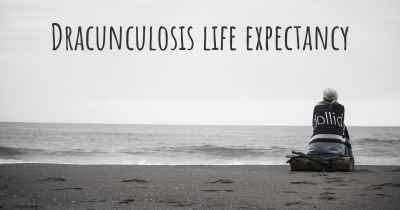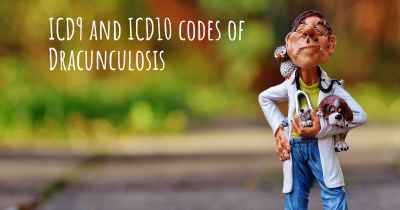Living with Dracunculosis. How to live with Dracunculosis?
Can you be happy living with Dracunculosis? What do you have to do to be happy with Dracunculosis? Living with Dracunculosis can be difficult, but you have to fight to try to be happy. Have a look at things that other people have done to be happy with Dracunculosis

Living with Dracunculosis
Dracunculosis, also known as Guinea worm disease, is a parasitic infection caused by the nematode Dracunculus medinensis. While it is a rare condition today, it can still affect individuals in certain parts of the world, particularly in rural areas with limited access to clean water sources. Living with Dracunculosis can be challenging, but with proper care and management, it is possible to lead a fulfilling life.
Prevention and Control
Prevention is key when it comes to Dracunculosis. The primary mode of transmission is through drinking water contaminated with copepods (tiny water fleas) that carry the infective larvae. To prevent infection, it is crucial to:
- Drink only safe, clean water from reliable sources.
- Filter or boil water to eliminate any potential contaminants.
- Avoid swimming or bathing in stagnant water sources.
- Practice good hygiene, including washing hands with soap and clean water.
Diagnosis and Treatment
If you suspect you have Dracunculosis or experience symptoms such as a blister or ulcer on the skin, fever, nausea, or vomiting, it is important to seek medical attention immediately. A healthcare professional will conduct a thorough examination and may perform tests to confirm the diagnosis.
Treatment for Dracunculosis focuses on removing the worm from the body. This is typically done by slowly and carefully extracting the worm from the blister or ulcer using a sterile technique. It is crucial to avoid breaking the worm during extraction, as it can lead to complications and secondary infections.
After the worm is removed, the wound should be cleaned and dressed properly to prevent further infections. Antibiotics may be prescribed to prevent secondary bacterial infections. It is important to follow the healthcare professional's instructions closely and attend follow-up appointments to ensure proper healing.
Managing Symptoms and Complications
Living with Dracunculosis can be accompanied by various symptoms and complications. It is essential to manage these effectively to improve quality of life. Some strategies include:
- Pain management: Over-the-counter pain relievers can help alleviate discomfort associated with the infection.
- Wound care: Keeping the affected area clean and dry, changing dressings regularly, and applying topical antibiotics can promote healing and prevent infections.
- Hydration: Drinking plenty of clean, safe water is crucial to prevent dehydration, especially if experiencing vomiting or diarrhea.
- Emotional support: Dealing with a chronic condition can be emotionally challenging. Seeking support from friends, family, or support groups can provide valuable emotional support.
Preventing Transmission to Others
If you have Dracunculosis, it is important to take precautions to prevent transmitting the infection to others. This includes:
- Isolation: Avoiding close contact with others, especially when the worm is being extracted or during wound care.
- Proper hygiene: Practicing good hygiene, such as washing hands thoroughly and regularly, can help prevent the spread of the infection.
- Education: Informing those around you about Dracunculosis, its transmission, and prevention methods can help raise awareness and prevent further infections.
Seeking Support and Expert Advice
Living with Dracunculosis can be physically and emotionally challenging. It is important to seek support from healthcare professionals who specialize in tropical diseases. They can provide expert advice, monitor your condition, and guide you through the treatment and recovery process.
Remember, early detection, proper treatment, and preventive measures are crucial in managing Dracunculosis. By following the recommended guidelines and seeking appropriate medical care, you can minimize the impact of this parasitic infection on your daily life.








